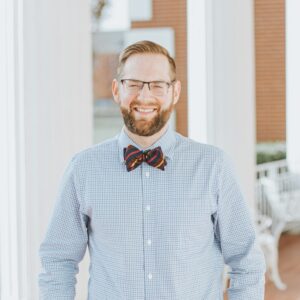
Learning and Teaching Without Walls (Part 1)
The COVID-19 pandemic has had untold impacts on our shared work of teaching and formation. For those whose institutions have continued in-person instruction, no matter the degree of precaution taken, the risks of transmission have added fear, stress, and uncertainty to teaching contexts that already include significant challenges (which I need not enumerate here). Our challenging circumstances have also provided unique opportunities, though. And many have responded with admirable flexibility and resiliency. I have heard inspiring stories from friends and colleagues who have been able to facilitate safe learning and are sometimes even thriving, within the constraints and possibilities of our specific situations.
I always have butterflies when a new school year begins, but in August of 2020 I felt paralyzed. How could I ensure that I was doing everything I could to keep my students safe while also facilitating the possibility of learning and growth within the unique stressors of the moment? I decided that, as long as I could ensure accessibility, all of my classes would meet outside, weather-permitting, as often as possible. In this first blog (of three), I will introduce the practice of outdoor teaching and reflect on its significance for theological education in our current circumstances. Two subsequent blogs will explore significant experiences and takeaways from my own outdoor instruction since August of 2020.[1]
As I noted above, my fundamental motivation for outdoor teaching was to ensure a safe learning space. To be sure, walls and a ceiling offer safety and protection from the elements. When indoor spaces become places of more significant risk, though, we can experience what is normally protective as oppressive. The masks and distancing required for safety in enclosed spaces also raised literal barriers to communication and to nurturing the sense of community which I strive to facilitate for my students. Meeting outdoors allowed us all to breathe more freely, and in turn, to communicate and cultivate community more intentionally and with greater effect than would have been possible behind masks, socially distanced, and wary of the threat of a pathogen spread much more easily in enclosed spaces.
Outdoor education has a long and storied history. While it has not always been adequately inclusive in western contexts, indigenous peoples have long emphasized the importance of learning within, and from, places of inhabitance. Our current climate crises demand that educators in theology and religious studies intentionally practice and foster connections with our more-than-human natural world for the sake of its well-being and for the sake of our own survival. Such intentionality is a matter of spiritual, religious, and moral concern for me as a Christian theologian. Though I have yet to teach a course directly on issues of creation care, teaching outside has already provided me with countless opportunities to connect my students to the natural world. Aside from providing an occasion to help meet the exigencies of responsible stewardship and living justly in creation, I have found that outdoor teaching is profoundly humane. Our built environments have the potential to make us forgetful of our dependence, contingency, and even capacities for embodied learning. However, as Jennifer Ayres writes, “When learners are invited outside the four-walled classroom, . . . their sensory experience of nature, particularly when paired with caring mentors who can accompany the learners as they make sense of their experience, can be transformative.”[2]
When we resumed face-to-face instruction in the fall of 2020, I told my students that I suspected that our shared work together during the 2020-2021 school year would likely make for the most challenging and most poignant year of their educational journey. It was certainly the most difficult and most transformative school year yet for me. Teaching outdoors has provided me countless opportunities to reassess and improve my abilities to empower and instruct my students, to discover and promote cross-curricular and intellectual, moral, and practical connections, to appreciate the privilege of the work that I am able to do, and to marvel at and encourage the courage, attentiveness, resiliency, and creativity of my students. Though the uncertainty of the pandemic continues—I write these words just days after the discovery of the Omicron variant—because of the countless benefits both I and my students have experienced in classrooms without walls, I cannot imagine going back inside again full-time. I will be relieved if and when we are all able to breathe, speak, and listen more freely indoors, but all of my future teaching will include the fresh air of my classroom without walls.
[1] I am grateful for the opportunity to share what I have learned in the hopes that others might benefit. That said, I must acknowledge that the privileges of my embodiment (as a cisgender white male) and my institutional circumstances (a campus with infrastructure amenable to outdoor instruction) mean that what I have been able to do may not be possible for others. Even so, the experience of meeting outside has reminded me of things I had forgotten and taught me new things about pedagogy that are worthy of consideration, even for those unable to teach outside.
[2] Jennifer R. Ayres, Inhabitance: Ecological Religious Education (Waco, TX: Baylor University Press, 2019), 76.
Leave a Reply